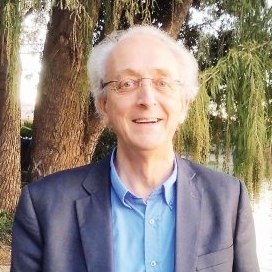
SA

Trauma not only treated on the analyst’s couch
GILLIAN KLAWANSKY
The internationally renowned expert on trauma and resilience in the face of terror and disaster recently presented workshops for mental-health professionals in South Africa. He also addressed Holocaust survivors and members of the Community Security Organisation.
“We psychologists are so old-fashioned. We think that everything is solvable by sitting on a chair for an hour a week, and talking. That doesn’t work for everyone,” he says, in explanation for his ways of working. “We must be creative, and think of how to use methods like neurofeedback, really training the brain. Post-traumatic stress disorder (PTSD) means you’re staying in survival mode when it’s not necessary, and that means that your brain really changes. It can change back though. We work on finding ways to make that happen.”
Born in Holland, Brom has lived and worked in Israel since 1988. “In the past 30 years in Jerusalem, we’ve developed many programmes,” he says. “The Psychotrauma Center is really a development space. My passion has always been to look at what hasn’t yet received attention in the trauma field.”
Brom told the SA Jewish Report that together with dealing with a constant threat of crime, South Africans have bigger questions about where society is going. “A lot is happening, and there’s a lot of anxiety here. Our work can be useful here, although one must always be respectful of the culture, and what does and doesn’t apply.”
Brom has done extensive work with Israeli Defense Force veterans, through the Psychotrauma Center’s Peace of Mind programme. “We take whole combat teams after they’re out of the army, which was never done before,” he says. “We give them time to speak, open up, and ask themselves, ‘What did my army service do to me?’ This is totally against Israeli culture. People don’t speak, wives don’t know where their husbands were in various wars. It’s amazing what it does when you give them that space.”
One part of the four-phase Peace of Mind programme involves taking veterans to Jewish communities in the diaspora, including places like London and New York, and possibly soon South Africa. “Connecting with communities offers a way of broadening both their perspective and the meaning of what they’ve done in the army.
“They’re blown away by how connected Jews are to Israel, and with the Israeli army,” says Brom. “We see them again six weeks later, and then six months later, to see who needs further support.”
Brom and his team have also reframed the nature of resilience, specifically in childhood. Questions they examine include how you build resilience, and whether you can make children more resilient. “In the past five to ten years, it’s become clear that the concept of resilience is a bit too vague. What’s taking over now is the concept of regulation. Can you regulate your emotions and your arousal? When you get overwhelmed by something that happens, can you get back to being regulated? That’s a central factor in how well people will cope with trauma.”
During his trip, Brom visited King David Linksfield, and spoke of how parents and children can be taught to regulate their emotions. He also revealed how teachers can be used as agents of change and resilience. “Children don’t need psychologists, they need their parents and their teachers to know how to allow them to go on with life after trauma,” he says.
“To keep all children learning and developing after experiencing trauma, you need to go where they are – in schools and with their families. You’re building and handing over a system of care that says, ‘Do something for all the children, build resilience’. You then determine through screening which children are more at risk, and ensure that they get what they need.”
One of the latest developments in psychology and trauma work, according to Brom, is the notion that trauma is not only in the mind, but in the body. “It’s the nervous system that reacts to threat when someone walks in with a gun, for example. We react, we don’t think and feel – we do. That means this hardwired system of survival mode is really in the body.
“In the Western world, psychology has taken it all to the head. When people see people trembling after a fall for example, they say, ‘You need to do something, you need to stop that’. We know now that’s the way the body gets out of survival mode.
“Just being with someone, and letting that natural discharge of energy develop is an amazing process if we dare just to let it be. Don’t be afraid of how your body reacts when you go through trauma. It knows what to do.”
Brom also uses a method of somatic experiencing, allowing positive feelings to overtake the panic that arises when traumatic memories surface. “American clinical psychologist Dr Peter Levine developed this method of having people just track what is happening in their bodies,” Brom says.
“He coined the term, the trauma vortex. As you think about a traumatic experience, you become increasingly constricted. If it’s later, and you’re experiencing PTSD and focusing on that memory – which is what many therapists have done until now – it doesn’t really work well because people go back into survival mode, and then there’s no processing.
“So, you do the opposite – tap into the body and the resources it has, and focus on a positive or relatively ok feeling somewhere in the body. If you do that, it starts to roll over in the body, creating the healing vortex. Through our research, we’ve found that this is a nice method to help get people out of PTSD.”
- Brom’s trip to South Africa was organised by local clinical psychologist Tracey Farber, and made possible by donor Jeff Shankman.




